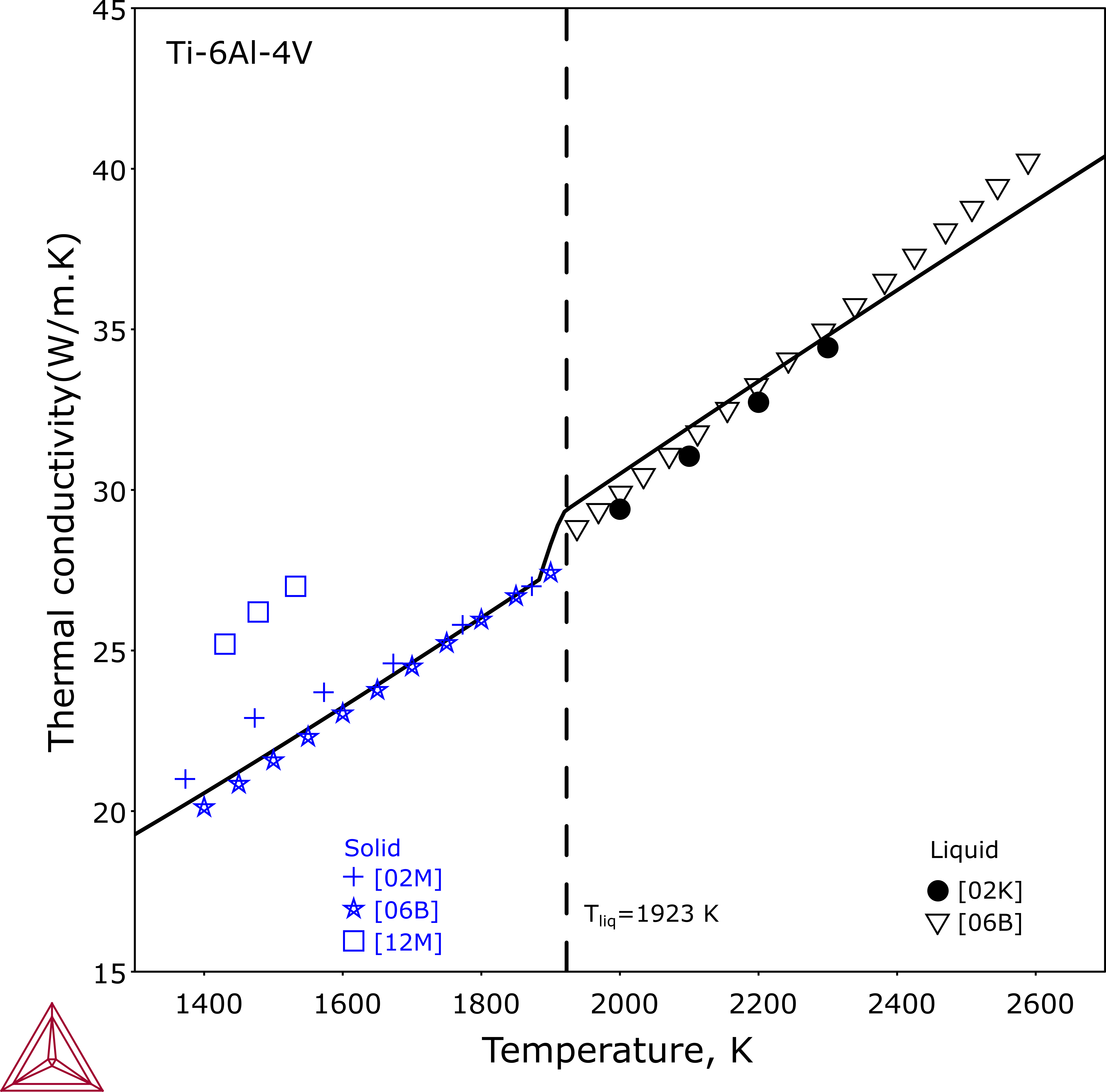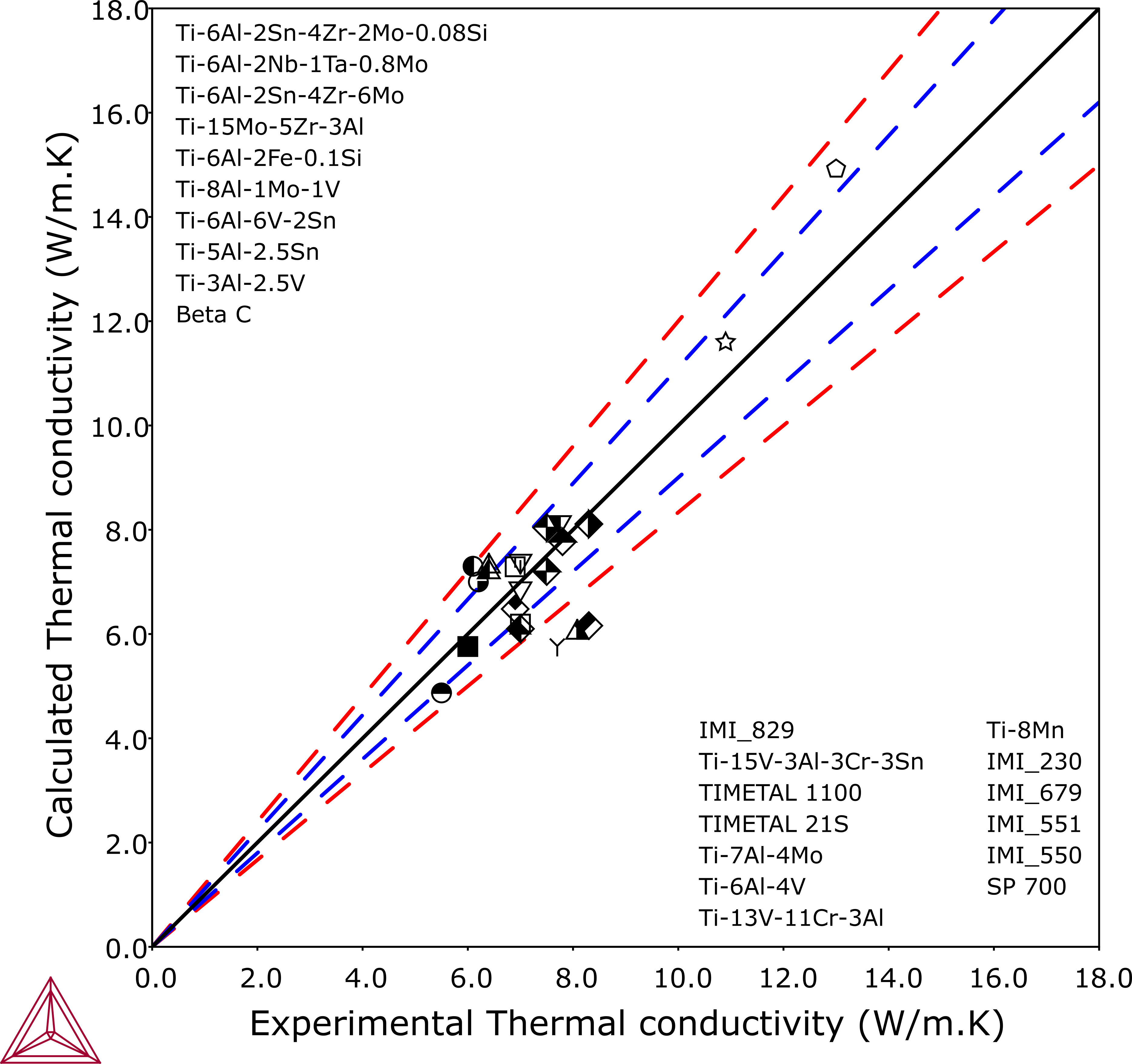Thermal Conductivity of Some Commercial Ti Alloys
Using Thermo‑Calc with the TCS Ti/TiAl-based Alloys Database (TCTI), you can calculate the quantities of a phase φ with the variable THCD (φ), or a system (i.e. alloy) with THCD. You can also calculate the derived quantities, i.e. thermal resistivity (THRS) and thermal diffusivity (THDF), in a similar way.
The database includes thermal conductivity starting with version 4 (TCTI4).
Ti-based Alpha-Beta Alloy: Ti-64
Ti-64 is the most well-known titanium alloy and is in widespread use. This example shows the calculated thermal conductivity of Ti-6Al-4V from 1300 to 2700 K. The plot shows that the data represented by blue squares are ~25% higher than the other two sets represented by cross and star symbols. Since it is a single β phase within this temperature range, scattering of experimental data can be attributed to the different measurement methods used in the experiments.
Read more on our website about Property Models, including information about the material specific Model Libraries (i.e steel, nickel, titanium, etc.), as well as how to create your own custom models in TC‑Python. If you are in Thermo‑Calc, press F1 to search the help.
Figure 1: Calculated thermal conductivity of Ti-6Al-4V compared with experiment data. The dashed line indicates the liquidus temperature.
Measured vs Calculated Thermal Conductivity
This example shows a comparison between measured and calculated thermal conductivity for a wide variety of commercial titanium alloys. The respective calculation is made by freezing-in the state at the typical heat treatment temperature of manufacture for each alloy. Deviations are expected because the thermal conductivity of alloys varies depending on the thermal-mechanical processing and actual composition. The black solid line in the plot shows where calculated values are equal to experimental data. The blue dashed lines mark for 10% deviations while the red dashed lines are for 20% deviations.
Figure 2: A comparison between measured and calculated thermal conductivity of various Ti-based alloys at room temperature. The data are from [1994ASM].
Reference
[1994ASM] R. Boyer, E. W. Collings, W. Gerhard (ed), Materials Properies Handbook: Titanium Alloys (ASM International, 1994).

